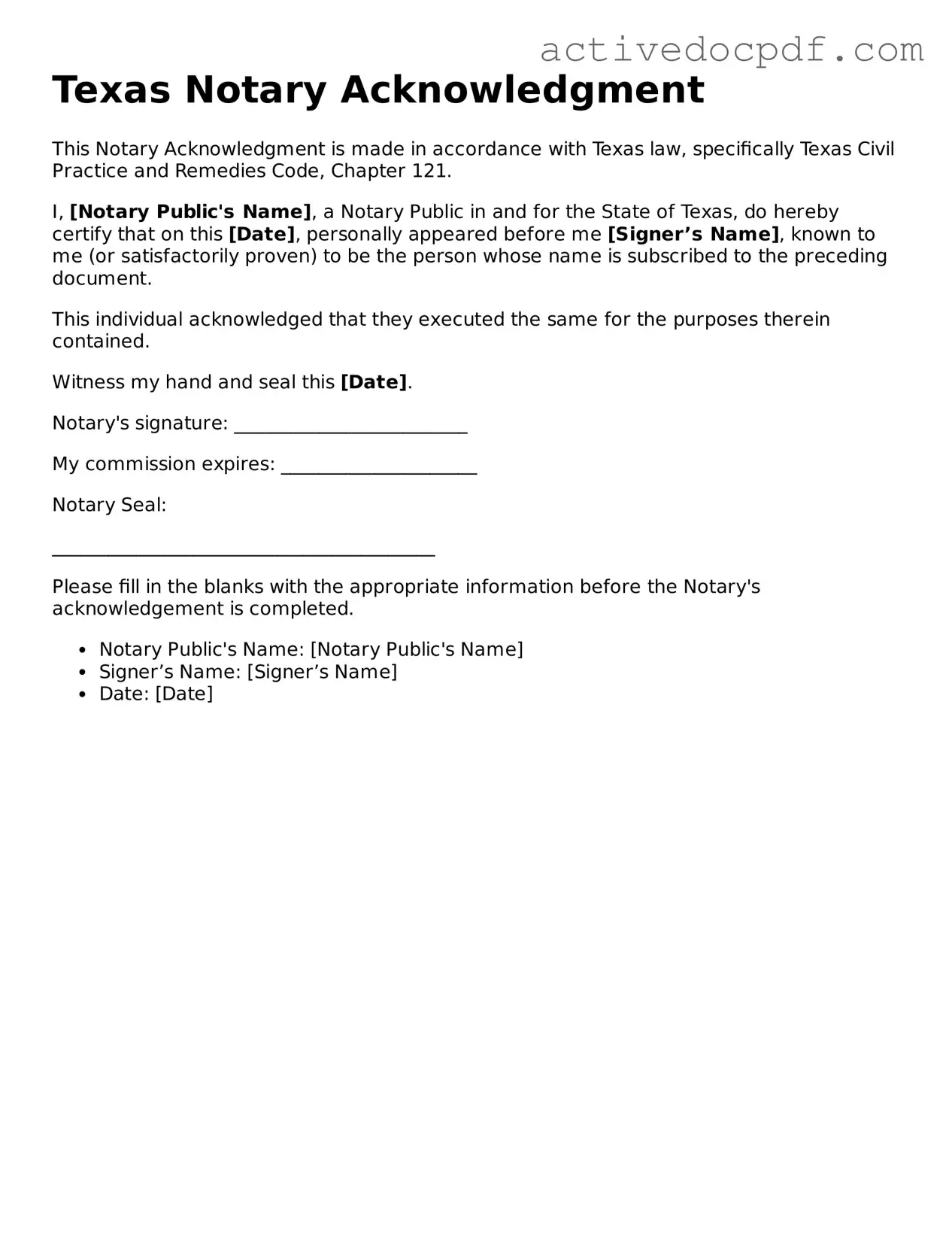The Texas Notary Acknowledgement form is a document that verifies the identity of a signer and confirms that they signed a document willingly and without coercion. This form is crucial in ensuring that the signing process is legitimate and can be trusted in legal matters. It typically includes the notary's signature, seal, and details about the signer and the document being acknowledged.
You need to use a Notary Acknowledgement form whenever a document requires notarization for it to be legally binding. Common situations include:
-
Real estate transactions
-
Wills and trusts
-
Powers of attorney
-
Contracts
In these cases, having a notary acknowledgment ensures that the signatures are authentic and that the document holds up in court if challenged.
Who can act as a notary in Texas?
In Texas, a notary public must be at least 18 years old, a resident of Texas, and must complete the required training and application process. They must also pass a background check. Once appointed, they can perform notarizations for individuals who need to have documents acknowledged, certified, or witnessed.
A complete Texas Notary Acknowledgement form typically includes the following information:
-
The name and address of the signer.
-
The date the acknowledgment is being made.
-
The type of document being acknowledged.
-
The notary's name, signature, and seal.
-
A statement confirming that the signer appeared before the notary and acknowledged their signature.
This information helps ensure clarity and legality in the notarization process.
Can I notarize documents for family members?
Yes, you can notarize documents for family members in Texas. However, it is essential to ensure that you do not have a direct financial interest in the transaction. If you have a vested interest, it may be considered a conflict of interest, and you should refrain from notarizing those documents.
